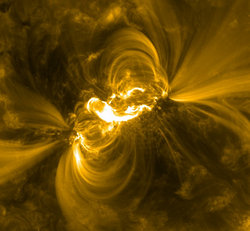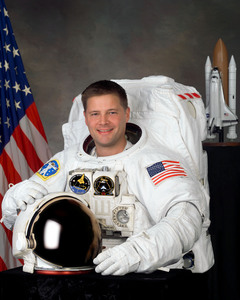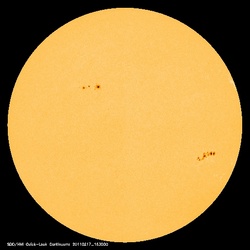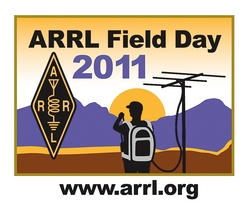 February 17, 2011 John E. Ross, KD8IDJ, Editor
| |||||||||
+ Legislative News: Spectrum Management Bill Threatens Amateur Frequencies
On February 10, Representative Peter King (R-NY-3), Chairman of the House Homeland Security Committee, introduced HR 607, the Broadband for First Responders Act of 2011. The bill been referred to the House Energy and Commerce Committee, which handles telecommunications legislation. HR 607 addresses certain spectrum management issues, including the creation and maintenance of a nationwide Public Safety broadband network. As part of that network, the bill provides for the allocation of the so-called "D-Block" of spectrum in the 700 MHz range for Public Safety use. The D-Block consists of two, 5 megahertz-wide segments of spectrum (758-763 and 788-793 MHz) that became available when the FCC ended analog television broadcasts in June 2009 and reallocated the 698-806 MHz band for Public Safety and commercial broadband. It was anticipated that the D-Block would be auctioned for commercial use. There are several bills in Congress providing for the allocation of the D-Block for Public Safety use, and HR 607 is one of those. But HR 607 uniquely provides for the reallocation of other spectrum for auction to commercial users, in order to offset the loss of revenue that would occur as the result of the allocation of the D-Block to Public Safety instead of commercial auction. HR 607 lists the paired bands of 420-440 MHz and 450-470 MHz among the bands to be reallocated for commercial auction within 10 years of its passage. Read more here. + Spaceweather : Sunspot 1158 Produces Largest Flare of Solar Cycle 24; CME Headed Toward Earth Over the past few days, there has been a lot of activity on the Sun. On Sunday, February 13 at 1738 UTC, sunspot 1158 unleashed an M6.6-level blast and on Tuesday, February 15, the same sunspot unleashed an X-class flare, the strongest solar flare in more than four years. On Thursday, February 17, the solar flux index reached 114, the highest yet in Solar Cycle 24. It is expected to continue to be at least 100 for the next few days.
The source of this activity is growing rapidly. Sunspot 1158 is in the Sun's southern hemisphere, which has been lagging behind the northern hemisphere in activity for Solar Cycle 24. This active region is now more than 100,000 km wide, with at least a dozen Earth-sized dark cores in the group. More Earth-directed eruptions are likely. In addition to flashing Earth with UV radiation, data from NASA's Solar Terrestrial Relations Observatory (STEREO) and its Solar Heliospheric Observatory (SOHO) show that the explosion also hurled a coronal mass ejection (CME) toward Earth. According to the Space Weather Prediction Center (SWPC), three CMEs are headed toward Earth. The last of the three seems to be the fastest and may catch both of the forerunners about mid- to late day on Thursday, February 17. Solar activity is expected to be moderate with a chance for an isolated major flare through February 19. Sunspot group 1158 is expected to produce more M-class flares and still has the potential for producing an M5 or greater x-ray event. There is also a chance for isolated M-class activity from sunspot group 1161. Geomagnetic storms are possible when the CME hits the Earth's magnetic field, and auroras are possible. Read more here. + Amateur Radio in Space: ARISSat-1 Deployment Postponed According to the AMSAT News Service, the deployment of the ARISSat-1 satellite from the International Space Station -- previously scheduled for Wednesday, February 16 -- has been postponed. The postponement was necessary because of changes in the work schedule for the February 16 space walk. Instead, ARISSat-1 deployment will be added to a spacewalk scheduled for July 2011.
When launched, ARISSat-1 will add another dimension to science classrooms worldwide, in addition to space communications for the Amateur Radio community. Unfortunately this delay will considerably narrow the window of opportunity for US school calendar activities, but may provide opportunities for summer learning activities. The project is a cooperative effort between AMSAT, ARISS (Amateur Radio on the International Space Station,) RSC-Energia (the Russian space agency) and NASA. The design, development and construction of the satellite were done entirely by AMSAT volunteers. Original plans called for the satellite to be hosted inside an old Russian spacesuit. But when the suit became unavailable, the radio equipment was modified and refitted to a newly designed space frame and named ARISSat-1. After it is deployed from the International Space Station, ARISSat-1 is expected to be operational in orbit for up to six months. For more on ARISSat-1, check out this article from the February 2011 issue of QST. + Dayton Hamvention : Astronaut Doug Wheelock, KF5BOC, to be Honored Guest of ARRL and AMSAT
Doug Wheelock, KF5BOC, will be attending the 2011 ARRL EXPO - part of the Dayton Hamvention® -- as a special guest of the ARRL and AMSAT. While at Hamvention, Wheelock will share his experiences about using Amateur Radio in space. Wheelock spent six months on the ISS, seven weeks as ISS Commander; while on board the ISS, he, along with fellow astronaut Shannon Walker, KD5DXB, participated in the Amateur Radio on the International Space Station (ARISS) program. Together, the two made 22 ISS-to-school and ISS-to-camp QSOs. Read more here. + Rockers with Ham Connection Win Big at Grammys One of the biggest prizes handed out during the February 13 Grammy awards went to rockers Arcade Fire. Their highly acclaimed album The Suburbs was crowned Album of the Year. While Arcade Fire's win was a surprise -- facing competition from Eminem, Lady Antebellum, Lady Gaga and Katy Perry -- it wasn't totally unexpected, as The Suburbs dominated many critics' best-of lists of 2010. Arcade Fire's Win Butler was visibly stunned as the group accepted their trophy and then quickly rushed to perform the last song of the night. Band members Win and Will Butler are the grandsons of the late orchestra leader Alvino Rey, W6UK. The song We Used to Wait from their winning album relates to communications and, during their concert performances of the song, the band displays images of Amateur Radio QSL cards. Arcade Fire was profiled in an article by ARRL Media and Public Relations Manager Allen Pitts, W1AGP, in the November 2010 issue of QST. QEX -- the March/April 2011 Issue
The March/April issue of QEX is coming soon, and it is full of theoretical and practical technical articles that you won't want to miss. QEX is the ARRL's "Forum for Communications Experimenters." Published bimonthly, it features technical articles, columns and other items of interest to radio amateurs and communications professionals. The mission of QEX is threefold: To provide a medium for the exchange of ideas and information among Amateur Radio experimenters; to document advanced technical work in the Amateur Radio field, and to support efforts to advance the state of the Amateur Radio art. Read more here. + ARRL Atlantic Division to Host Two Webinars in February
Periodically, the ARRL's Atlantic Division hosts a "webinar" -- an interactive web-based seminar, designed to facilitate communication between a small number of presenters and a large remote audience using the Internet. During February, Atlantic Division Director Bill Edgar, N3LLR, will host two webinars for ARRL members, one on 501(c)(3) organizations and one on using Narrow Band Emergency Messaging Software (NBEMS) -- a set of programs used to send messages and files via Amateur Radio using an audio interface. Read more here. ARRL Headquarters to Close in Observance of Presidents' Day ARRL Headquarters will be closed in observance of Presidents' Day on Monday, February 21. There will be no W1AW bulletin or code practice transmissions that day. ARRL Headquarters will reopen Tuesday, February 22 at 8 AM Eastern Standard Time. We wish everyone a safe Presidents' Day holiday. Solar Update
Tad "The glory of the departing Sun piled up masses of gold and burning fire" Cook, K7RA, reports: A dramatic surge in solar activity is underway, with a level of sunspot numbers and solar flux not seen since 2005-2006. Tuesday's sunspot number of 100 has not been observed since April 6, 2006 when it was 105. On Wednesday the solar flux was 114.1, and the last time it was that high was September 15, 2005 when it was 119.4. The average daily sunspot numbers rose this week by more than 25 points to 69.9, and the average daily solar flux was up 20 points to 103.5. NOAA/USAF predicts solar flux at 105 on February 17-18, 100 on February 19-21, 98 on February 22-24 and 80 on February 25-28. The planetary A index is predicted at 18, 25 and 12 on February 17-19 and 5 on February 20-28. Look for more information on the ARRL website on Friday, February 18. For more information concerning radio propagation, visit the ARRL Technical Information Service Propagation page. This week's "Tad Cookism" is brought to you by Charles Dickens' The Old Curiosity Shop. ARRL Field Day: 2011 Field Day Packets Available
It's that time of year again -- time to start gearing up for ARRL Field Day, June 25-26, 2011! ARRL's flagship operating event -- always held the fourth full weekend in June -- brings together new and experienced hams for 24 hours of operating fun. Field Day packets are now available for download and include the complete rules (including a change for 2011), as well as other reference items such as forms, ARRL Section abbreviation list, entry submission instructions, a Frequently Asked Questions section, guidelines for getting bonus points, instructions for GOTA stations and a kit to publicize your event with the local press. Read more here. This Week on the Radio This week:
Next week:
All dates, unless otherwise stated, are UTC. See the ARRL Contest Branch page, the ARRL Contest Update and the WA7BNM Contest Calendar for more info. Looking for a Special Event station? Be sure to check out the ARRL Special Event Stations Web page. Upcoming ARRL Section, State and Division Conventions and Events
To find a convention or hamfest near you, click here. ARRL -- Your One-Stop Resource for Amateur Radio News and Information
Click here to advertise in this newsletter. | |||||||||
















